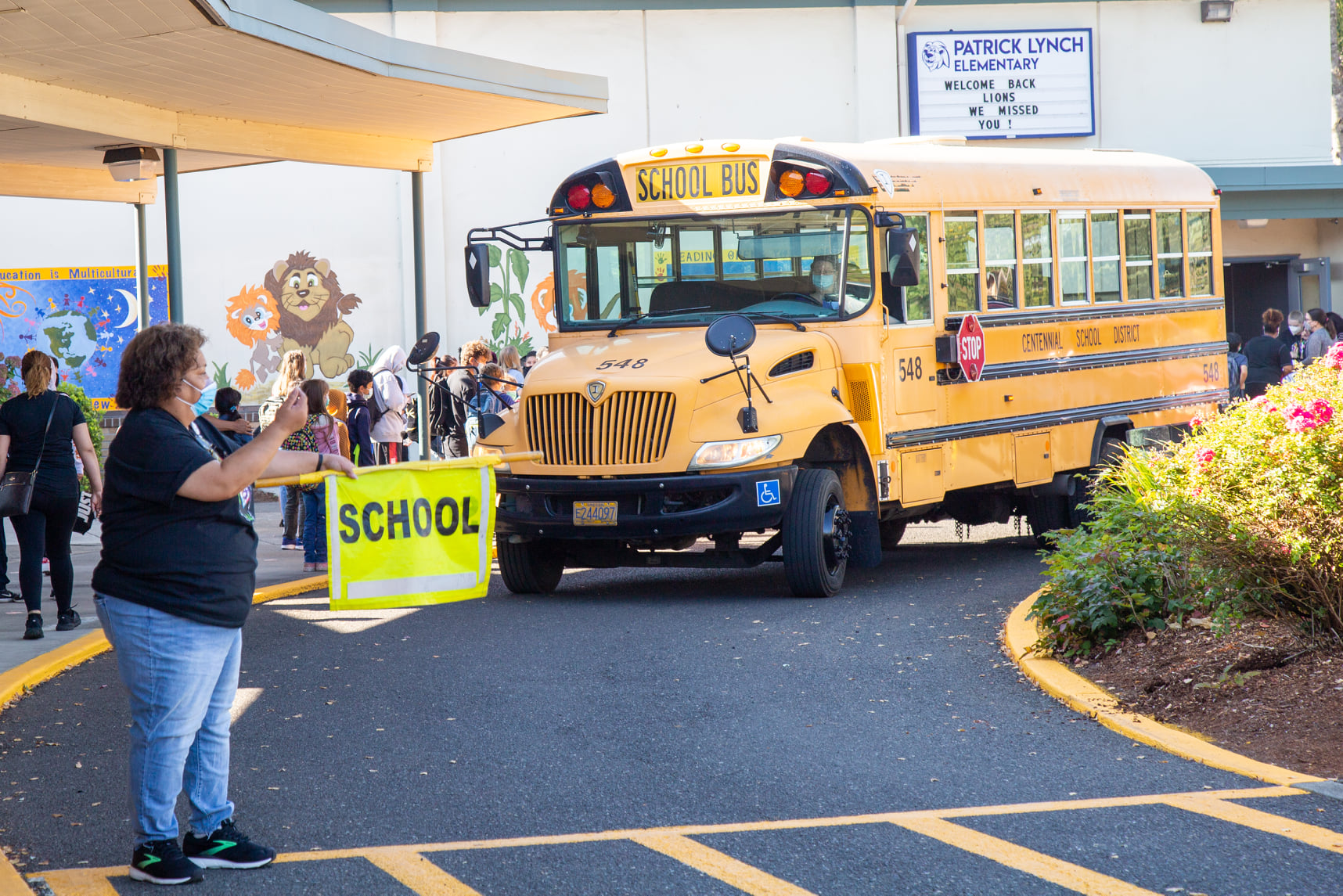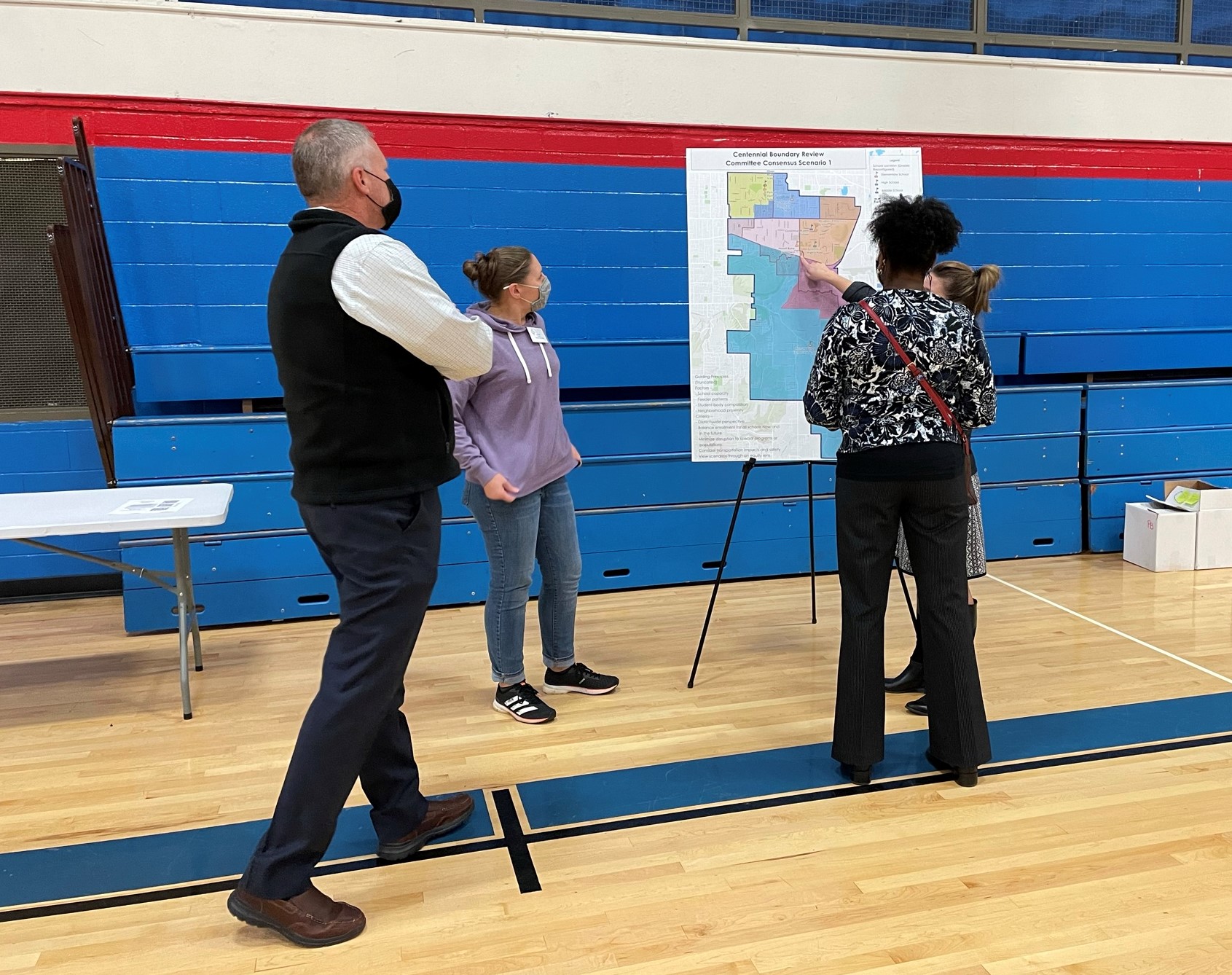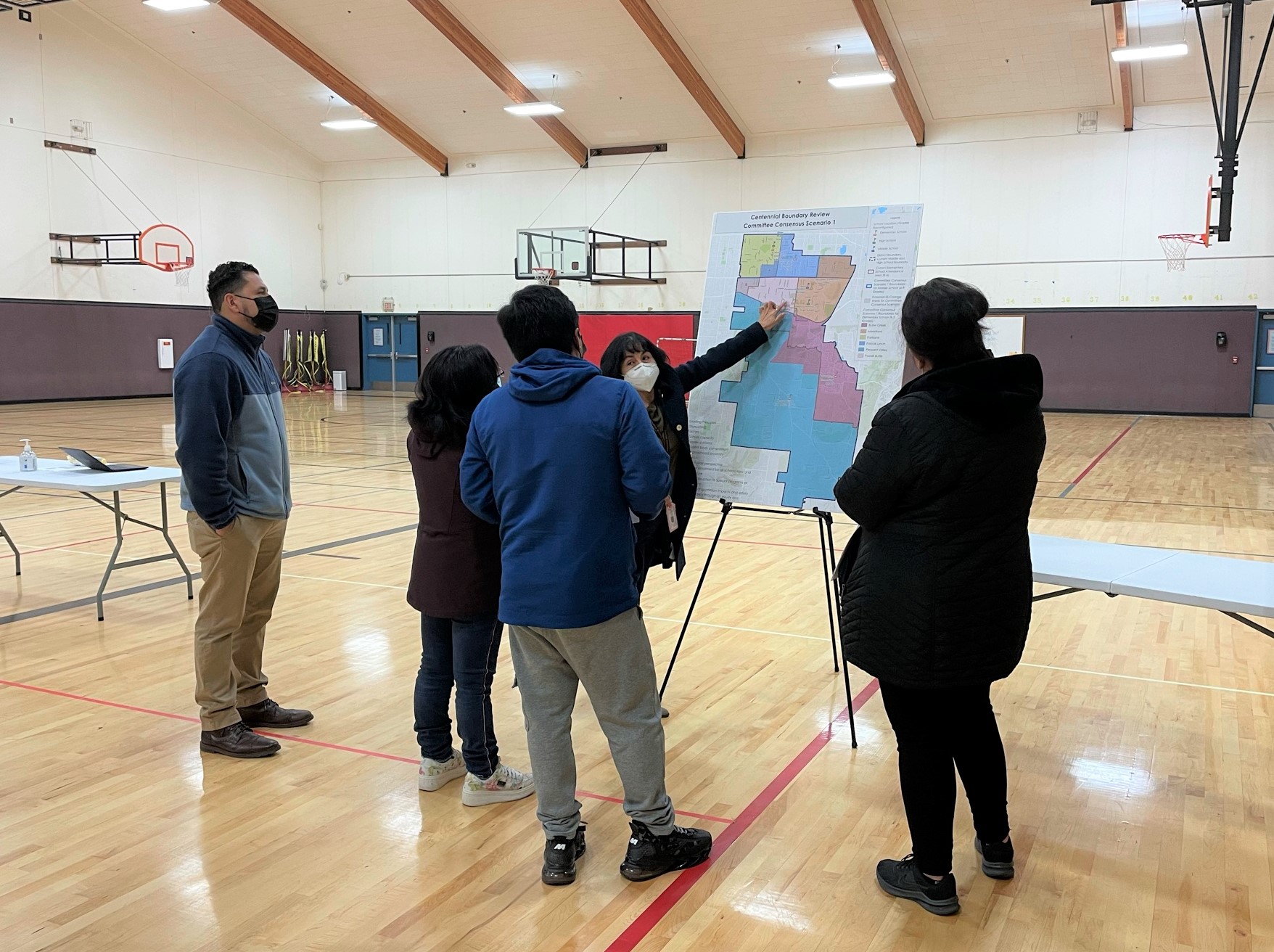Data Compilation, Planning Strategies, and Public Engagement Support Grade Reconfiguration
Client: Centennial School District
Location: Portland, Oregon
Meet the Client
Centennial School District (CSD), in the suburbs of east Portland, Oregon, has around 5,700 students, with an ethnic minority enrollment of 60% and with 45% of all students qualifying for free or reduced-priced lunch. CSD has one high school (grades 9–12), one middle school (grades 7–8) and seven elementary schools (grades K–6). Based on recent enrollment forecasts, the district is expected to grow steadily in enrollment for the next ten years, with an estimated enrollment of over 6,000 students by 2030–31.

The Challenge
In reviewing their existing school facilities, CSD determined that Centennial Middle School, with an enrollment of 975, would quickly outpace the effective school capacity of 1,000 students in the next few years. To plan for this inevitability, CSD decided that Oliver Elementary School would be converted to a middle school for the 2022–23 school year to serve grades 6–8 (along with Centennial MS), with the remaining six elementary schools reconfigured to serve students in grades K–5. A facilities improvement bond was passed in 2020 for these changes.
The Solution
FLO was contracted in spring 2021 to support CSD in developing a process to create both new elementary school feeder boundaries (based on the reduction in elementary facilities by one school and realignment of elementary grades) and a new middle school boundary for the conversion of Oliver ES into Oliver MS, each to be implemented for the 2022–23 school year. The final selected boundary would have to ensure that all school enrollments and student demographics were balanced and below facility capacities for both the current school enrollments and those forecasted through 2030.
Key to FLO’s recommended process for creating new attendance boundaries is the planning of strategic opportunities to collect school board and community input to inform decisions about boundary changes. We do this by first encouraging district leaders to survey the community about its priorities for new boundaries (e.g., balanced enrollment across schools, avoiding barriers to walking students) and then using this input to create a set of guiding principles that the final boundary scenario must meet.
We advise districts to create a boundary review committee consisting of parents, staff, and administrators to develop and review various boundary scenarios that we then spatially model, and to bring two to three of these committee-approved scenarios to the public via community open houses to gather parent and community input. CSD put all of these recommendations into practice, working closely with FLO to develop a well-thought-out timeline and scope of work.
From October 2021 through January 2022, we participated in seven boundary review committee meetings (all virtual meetings, due to district COVID containment concerns), where FLO modeled maps and school capacity statistics on the fly for over 25 boundary scenarios brought forward by committee members during these meetings. Modeled scenarios were scrutinized by committee members to see how each aligned with the board’s guiding principles as well as how each would balance school enrollments and meet school capacities and demographic targets both at the time and in the future. We also presented draft maps at two open houses and two virtual updates at public board meetings.
After four committee meetings, an agreed-on scenario was brought to the public for review at the first in-person community open house (in November 2021). A fully virtual open house was also offered as an alternative. We solicited feedback from the community both in person and remotely via an electronic survey and email responses. This input was shared with the committee, and a second, refined boundary scenario was determined after two additional meetings and again shared with the public at a second open house (fully virtual due to a new COVID-19 wave) in January 2022. Community input from this open house was shared with the committee at the seventh boundary review committee meeting, and the committee decided on a final scenario that they felt best met the guiding principles for these new elementary and middle school boundaries.


The Results
This final scenario, greatly influenced by community input and approved by the board in February 2022, provides the CSD with new school attendance boundaries that will ensure that all school enrollments are at or under desired school capacities both now and for the next decade. This scenario also creates elementary feeders into the two district middle schools, enabling emerging development of distinct middle school cultures as students matriculate through each elementary feeder.
To support the CSD’s efforts in communicating these new boundaries to families in the district, FLO developed an interactive school locator application for the CSD website, in which parents can enter their home address onto a map that will then display their student’s current school of attendance (2021–22 school year) and future school of attendance based on the new boundaries to be implemented in the 2022–23 school year.
Contact Us
Explore Our Work
-
City of Roseville Redistricting
Client: City of Roseville
-
City of Reno Redistricting
Client: City of Reno
-
City of New Orleans Redistricting
Client: City of New Orleans
